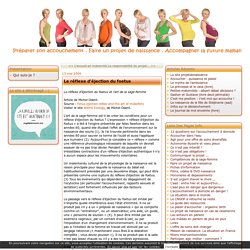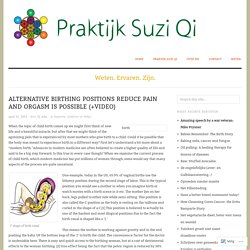

Primipare (Positions d'accouchement en BD) Suite à la publication de ma BD « Primipare » sur ce blog, j’ai été contactée par un gynécologue-obstétricien, praticien hospitalier, expérimenté, qui a postulé à la maternité d’Orthez.

Je suis si fière !!! Malheureusement, la maternité d’Orthez est toujours en danger. Malgré ce que l’on voudrait nous faire croire, il est très probable que l’ARS (l’Agence Régionale de Santé) ait décidé depuis très longtemps déjà qu’elle préférait fermer la maternité, espérant qu’avec l’été, la mobilisation se ramollirait et que tout ça passerait inaperçu. Il faut prouver que l’ARS a tort : NOUS NE VOULONS PAS QUE LA MATERNITÉ D’ORTHEZ FERME.
Les lieux où les femmes sont bien informées, bien traitées, écoutées, et où on leur laisse le choix d’accoucher dans les conditions qu’elles préfèrent, sont trop rares en France. Mobilisons-nous ! La pétition ici. La page Facebook du groupe de soutien, pour se tenir au courant des actions à venir, en cliquant là. La suite au prochain numéro. Aide-mémoire accouchement physiologique - Orbie. Des positions pour faciliter et accélérer l'accouchement. Des positions pour faciliter la naissance de votre bébé. Guide de mobilité pour le travail et l'accouchement. Guide de mobilité pour le travail et l'accouchement Maternité : si on bougeait !

Une somme de connaissance importante peut nous être apportée par l’étude des diverses positions prises par les femmes de différentes populations traditionnelles durant leur accouchement : selon leur constitution, la forme de leur bassin, elles restent debout, s’accroupissent, s’agenouillent ou reposent sur leur ventre. De plus, elles varient leurs positions à différents stades du travail, selon la position de la tête de l’enfant dans la cavité pelvienne. Je crois que c’est une profonde erreur de suivre les coutumes et les modes, et de ne pas faire davantage de place à l’instinct dans un tel mécanisme qui touche à notre nature profonde. Accouchement physiologique et positions d’accouchement : suivre le mouvement mouvemen. Compilation positions d'accouchement. La position gynécologique. La poussée dirigée. Il est très fréquent à l'hôpital que le praticien (après vous avoir examiné par toucher vaginal) vous dise : "maintenant il va falloir pousser" : le moment de pousser est décidé "arbitrairement" par le praticien en fonction de la dilatation de votre col (qui "doit" être totale) et de l'engagement du bébé dans votre bassin.

On vous indique quand pousser, comment le faire et comment respirer. C'est la poussée dirigée. Mais la poussée est un acte réflexe, involontaire. Lorsqu'on laisse un accouchement se dérouler normalement, sans intervenir, il arrive un moment où la femme a envie / besoin de pousser (parfois ce besoin est confondu avec une envie d'aller à la selle). La poussée, c'est tout sauf de la plongée en apnée ! La poussée pour les mères primipares. © 2000 Midwifery Today, Inc.

All rights reserved. Tous droits réservés. [Editor's note: This article was first published in English in Midwifery Today Issue 55, Autumn 2000.] [La note du rédacteur: Originallement publié dans Midwifery Today Issue 55, autumn 2000.] Traduit de l'anglais par Marypascal Beauregard et Bernard Bel Avertissement concernant les traductions Midwifery Today, Inc., ne garantit pas la précision des textes publiés dans une autre langue que l'anglais, qu'il s'agisse de publications imprimées ou du contenu de ses sites internet. Les textes publiés à l'origine dans une autre langue que l'anglais, que ce soit dans Midwifery Today ou ailleurs.Les textes publiés à l'origine en anglais et traduits par la suite dans une autre langue, que le texte d'origine ait été publié dans Midwifery Today ou ailleurs. Il convient de toujours se reférer à l'édition en anglais pour avoir accès à la précision maximale des textes publiés par Midwifery Today. 1. 2. 3. 4.
La sensation d'être coincé. Le réflexe d'éjection du foetus. Le réflexe d'éjection du foetus et l'art de la sage-femme.

L'accouchement selon Bernadette de Gasquet : « Inutile de pousser » Olika ställningar före och under förlossningen. Positions for labour and birth. Safe positions for the mother with an epidural. We like to move it, move it! Historical and traditional birthing positions. Although most women envision birth in a semi-reclining or semi-sitting position these days, there are many other possible positions in which to give birth.However, it's always important to point out that there is no one "right" position for laboring or pushing out a baby.

All positions have pros and cons. Care providers should encourage women to experiment with different positions and then trust that the woman's body will tell her the right position for her needs. Barriers to alternative birth positions. We have been talking about birthing positions, both for labor (first stage) and for pushing out the baby (second stage).

Specifically, we are most interested in "alternative" birth positions, ones that are under-utilized in the hospital. Part One of this series discussed Historical and Traditional Birth Positions because in ancient times and in traditional cultures, birth positions were typically more varied. Alternative birthing positions reduce pain and orgasm is possible. When the topic of child birth comes up we might first think of new life and a beautiful miracle, but after that we might think of the agonizing pain that is experienced by most mothers who give birth to a child.

Could it be possible that the body was meant to experience birth in a different way? First let’s understand a bit more about a “modern birth.”Advances in modern medicine are often believed to create a higher quality of life and said to be a big step forward. Pop a squat: OB edition. I’ve previously written about the benefits of squatting for ailments of the gastrointestinal tract, specifically diverticulitis and hemorrhoids.

Some argue that squatting to defecate can prevent all manner of illness and while there are some clinical conditions I’d like to explore further in the squatting-in-the-bathroom paradigm, today I want to write about something quite different. I finished my Obstetrics and Gynecology clerkship 5 weeks ago. I did my clerkship at a large, and rather posh, private hospital that is affiliated with my medical school. Birth positions. The gentlebirth.org website is provided courtesy ofRonnie Falcao, LM MS, a homebirth midwife in Mountain View, CA Subsections on this page: Resources Vertical Birthing in Peru - Peru's health ministry has said vertical birthing positions can be healthier for women by reducing pressure on the uterus and large blood vessels that can affect the amount of oxygen going to the baby.

Postpartum outcomes in supine delivery by physicians vs nonsupine delivery by midwives.Terry RR, Westcott J, O'Shea L, Kelly F. J Am Osteopath Assoc. 2006 Apr;106(4):199-202. Facilitating woman-centred care in second stage of labour. Cochrane review supports choice. In this guest blog, midwifery lecturer Mercedes Perez Botella considers the latest Cochrane evidence on how to push in second stage. She also reflects on aspects of this part of the birth experience that aren’t captured in these trials, a good reminder that best practice will bring together evidence, clinical judgement and the preferences of the women in your care. Some clinicians (including me) have long believed that directed pushing does not reduce the duration of the second stage of labour, that the impact on perineal damage is unchanged and that neonatal status as measured by the Apgar at 5 minutes and admission to the neonatal care unit are not improved by this type of pushing technique.
Now a Cochrane review* has found “no conclusive evidence to support or refute any specific style or recommendation as part of routine clinical practice” and that “patient preference and clinical situations should guide decisions.” Spontanous or directed pushing? Getting pushy. © 2011 Midwifery Today, Inc. All rights reserved. [Editor’s note: This article first appeared in Midwifery Today Issue 98, Summer 2011.] The final question on the final exam for the Obstetrics I class I teach at our local midwifery school is this: A mother is in labor and has reached full dilation. It seems the contractions have slowed almost to a stop, and the mother appears to be almost resting—what is happening and what should you do? Pushing: leave it to the experts. A birthing woman is the expert regarding when and how she pushes.
Providing directions implies she needs our guidance and we are the experts. Of course each woman and birth situation is different and in some circumstances guidance may be helpful for a woman. New Evidence That We Just Need To Give Women More Time To Labor. Don't Push: New Programme Could Save Women From Birth Injury - The Natural Parent Magazine. By Hannah Schenker For those who have been reading about and involved with the Positive Birth Movement and who have read about things like unassisted, ecstatic or orgasmic births, this may prompt you to throw your arms in the air and exclaim “No kidding! We’ve been saying this for aaaaages!”. For those who are pregnant and anticipating their birth experience, this may be helpful to know. Thousands of women could be saved from debilitating injuries thanks to a new midwife-led programme in the UK that aims to smash the myth that women need to force themselves to push during labour. Designed by staff at Medway Foundation Trust in Kent, the programme has already reduced unintentional damage to the birthing mother by as much as 85 per cent in some maternity wards, and reduced the incidence of traumatic tearing from 7 per cent to just 1 per cent of mamas.
Women in Labor Stop Pushing, See Amazing Results - Mothering. If you’ve ever seen a woman delivering a baby in a movie or a television show, you have heard the rallying cry: “Push!” If you’ve had a baby yourself, you’ve likely heard it too. How to ruin a perfectly good birth. Edited and update: June 2016 Here is a scenario I keep hearing over and over: A woman is labouring away and all is good. She begins to push with contractions, and her midwife encourages her to follow her body.
After a little while the midwife checks to ‘see what is happening’ and finds an anterior cervical lip. The woman is told to stop pushing because she is ‘not fully dilated’ and will damage herself. Her body is lying to her – she is not ready to push.